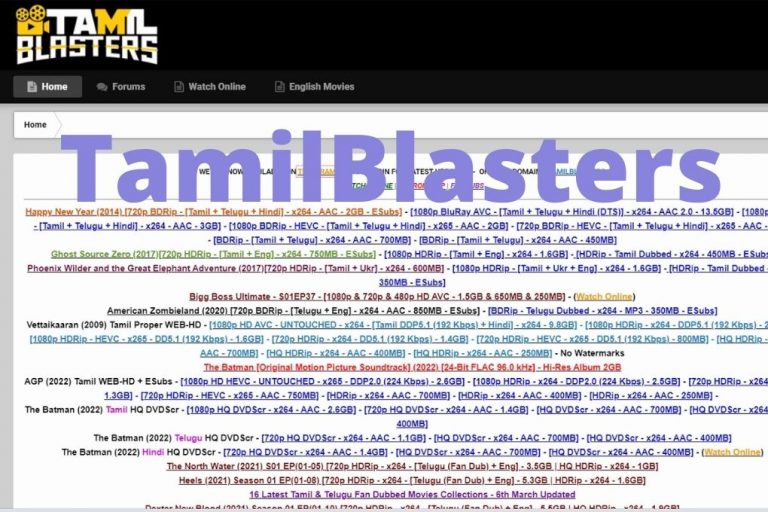Tamilrockers Leaks Baaghi 3! Watch It Legally Instead
Ever wondered how some websites manage to offer the latest blockbusters for free? The realm of online piracy, spearheaded by sites like Tamilrockers and Tamilblasters, continues to thrive, challenging copyright laws and disrupting the entertainment industry.
On March 07, 2020, at 5:57 pm, reports surfaced that Tamilrockers had leaked the full movie of "Baaghi 3" online. The Tiger Shroff starrer, directed by Ahmed Khan and featuring Riteish Deshmukh, Shraddha Kapoor, Ankita Lokhande, and Jaideep Ahlawat, became the latest victim of this notorious piracy website. This incident underscored the persistent threat these platforms pose to filmmakers and distributors.
| Subject | Details |
|---|---|
| Website Names | Tamilrockers, Tamilblasters, TamilMV |
| Type | Piracy/Torrent Websites |
| Region of Origin | India |
| Content | Movies (Tamil, Telugu, Hindi, English, Malayalam, Kannada, Punjabi), TV Shows, Music Videos, Copyrighted Material |
| Access Methods | Direct Website, Proxy Links, Mirror Sites, Torrent Files, Magnet Links |
| Legal Status | Illegal, Blocked by ISPs in India and other regions |
| Business Model | Advertising, User Traffic |
| Impact | Copyright Infringement, Loss of Revenue for Entertainment Industry |
| Countermeasures | Website Blocking, Legal Action, Awareness Campaigns |
| Reference Link | Wikipedia - Film Piracy |
The modus operandi of Tamilrockers involves leaking copyrighted content, including movies, television shows, and music videos. This torrent website, based in India, facilitates the distribution of this material, often causing significant financial losses to the entertainment industry. Users can download movies in various languages, including Tamil, Telugu, Kannada, Hindi, and English, all for free.
- Who Is Nancy Kerrigans Husband His Role Impact
- Breaking All About Liam Paynes Wife Status History Now
Tamilblasters operates similarly, offering users the ability to download and watch the latest Tamil, Malayalam, Telugu, Kannada, Hindi, and English movies online. The site functions as a directory of torrent files and magnet links, which users can then download using a BitTorrent client. The platform hosts a vast collection of movies and series spanning multiple languages. These sites thrive on providing free access to copyrighted content, attracting a large user base.
Given the illicit nature of their activities, these sites are frequently restricted by Internet Service Providers (ISPs). To circumvent these restrictions, Tamilrockers and Tamilblasters utilize a network of proxy and mirror sites. These proxy links act as intermediaries, allowing users to bypass the blocks and access the main website. However, users are often advised to proceed with caution when using these proxy sites, as they can sometimes pose security risks.
Accessing Tamilrockers through a proxy link typically involves finding a working proxy link, opening it, and accessing the Tamilrockers homepage. From there, users can use the search bar to find the movie or TV series they wish to download. Once found, they can choose the desired quality (e.g., 720p, 1080p) and then download the file using a magnet link and a BitTorrent client.
- Decoding Sean Combs Marital History What We Know Now
- Who Is Peter Dinklages Son Unveiling Potential Amp Legacy
The process for downloading from Tamilblasters is similar. The platform offers both download and streaming options. Users can search for the desired movie or series, select the preferred quality, and then download the file. For example, a user might find "Love Today (2022) Tamil Web DL 1080p HQ AVC AAC 3.7 GB HC ESub" and then proceed to download it.
Here is a detailed breakdown of the platforms workings:
- Tamilblasters hosts a vast collection of movies and series spanning multiple languages, including Tamil, Telugu, Malayalam, Hindi, and even English.
- It functions as a directory of torrent files and magnet links, which users can download using BitTorrent client software.
- Anyone who works great or entertain users, people start liking that and them and recommend tamilblasters to other users via word of mouth, on social media, on YouTube, and other platforms.
TamilMV is another website that operates similarly to Tamilrockers. It provides users with copyrighted content, including the latest television shows, movies, music, and videos. Like Tamilrockers, TamilMV allows users to search and download copyrighted content for free using magnet links and torrents.
The widespread use of these piracy websites has led to significant legal challenges. Despite numerous legal battles and constant takedowns, these sites continue to operate, largely due to the proliferation of proxy and mirror sites. ISPs in India and other regions have blocked the official websites, but users often find ways to circumvent these blocks using proxy links and other methods.
In May 2025, it was reported that 40+ new proxy links would help users access Tamilrockers without any issues. These links are designed to bypass restrictions, allowing users to enjoy their favorite content. However, the legality of using these sites remains a significant concern.
The legal implications of downloading movies from such platforms are severe. Copyright infringement is a criminal offense, and users who download copyrighted material from these sites could face legal penalties. Moreover, these sites often contain malware and other malicious software, which can compromise users' devices and personal information.
To combat piracy, various measures have been implemented, including website blocking, legal action, and awareness campaigns. However, the operators of these sites are often adept at finding ways to circumvent these measures, making it difficult to completely shut them down. The ongoing battle between copyright holders and piracy websites highlights the challenges of protecting intellectual property in the digital age.
While many users find these platforms convenient for accessing free content, it is essential to consider the ethical and legal implications. Supporting legitimate streaming services and purchasing movies and TV shows helps to ensure that creators are fairly compensated for their work and that the entertainment industry can continue to thrive.
The continued existence of sites like Tamilrockers and Tamilblasters underscores the need for a multi-faceted approach to combating piracy. This includes strengthening copyright laws, increasing public awareness, and developing more effective technological measures to prevent the distribution of copyrighted material. Additionally, providing affordable and accessible alternatives to pirated content can help to reduce the demand for these illegal services.
The controversy surrounding these platforms isn't just about legal issues; it also touches upon the accessibility of entertainment for a broad audience. Many argue that high costs of legal streaming services and cinema tickets push consumers towards these free alternatives. The solution likely lies in striking a balance between protecting intellectual property rights and ensuring that entertainment is affordable and accessible to all.
Navigating the landscape of online content consumption requires a discerning approach. While the allure of free movies and TV shows is strong, understanding the risks and implications associated with piracy is crucial. Responsible digital citizenship involves respecting copyright laws and supporting the creative industries through legitimate channels.
In conclusion, the saga of Tamilrockers, Tamilblasters, and similar sites serves as a reminder of the ongoing challenges in the fight against online piracy. By understanding the operations of these platforms, the legal implications of using them, and the importance of supporting legitimate content providers, consumers can make informed choices about how they access and enjoy entertainment.
The issue is further compounded by the ease with which these websites can resurface under different names and domain extensions. The cat-and-mouse game between law enforcement and these piracy hubs seems endless, with each takedown followed by a swift re-emergence. This resilience highlights the importance of addressing the underlying demand for free content.
Moreover, the revenue model of these sites often relies on intrusive advertising and potentially harmful downloads. Users who visit these sites risk exposing their devices to malware, viruses, and other security threats. The cost of "free" entertainment can sometimes be higher than anticipated, with potential damage to personal data and hardware.
The debate also extends to the moral obligations of consumers. While some may view downloading pirated content as a victimless crime, it directly impacts the livelihoods of actors, writers, directors, and countless others who contribute to the creation of movies and TV shows. Supporting these industries through legal channels ensures their continued viability and encourages the production of high-quality content.
The role of technology in combating piracy cannot be overstated. Watermarking, digital rights management (DRM), and other technical measures can help to protect copyrighted content and prevent its unauthorized distribution. However, these technologies are often circumvented by skilled hackers, underscoring the need for constant innovation and adaptation.
Education plays a vital role in shaping consumer behavior. By educating the public about the ethical and legal implications of piracy, it is possible to foster a greater appreciation for intellectual property and encourage responsible online practices. Schools, community organizations, and media outlets can all contribute to this effort.
The global nature of the internet presents unique challenges in the fight against piracy. Websites like Tamilrockers and Tamilblasters often operate from jurisdictions with lax copyright enforcement, making it difficult to pursue legal action against their operators. International cooperation is essential to address this issue effectively.
The entertainment industry itself is adapting to the changing landscape of content consumption. Streaming services like Netflix, Amazon Prime Video, and Disney+ offer a vast library of movies and TV shows at affordable prices, providing a convenient and legal alternative to piracy. These platforms are also investing heavily in original content, further incentivizing consumers to subscribe.
The rise of social media has also played a role in the spread of pirated content. Users often share links to illegal downloads on social media platforms, making it easier for others to access them. Social media companies are taking steps to address this issue, but more work needs to be done to prevent the spread of piracy on their platforms.
The challenge of combating piracy is not simply a matter of law enforcement and technology. It also requires a cultural shift in attitudes towards intellectual property. By fostering a greater respect for creativity and innovation, it is possible to create a more sustainable ecosystem for the entertainment industry.
The story of Tamilrockers and Tamilblasters is a microcosm of the larger battle against online piracy. It highlights the complexities of the issue, the challenges of enforcement, and the importance of addressing the underlying demand for free content. By working together, governments, industry stakeholders, and consumers can create a more equitable and sustainable future for the entertainment industry.
Ultimately, the fight against piracy is a continuous process that requires vigilance, innovation, and a commitment to protecting intellectual property rights. While there is no easy solution, a combination of legal measures, technological solutions, and educational initiatives can help to reduce the prevalence of piracy and ensure that creators are fairly compensated for their work.
The temptation to access free content is understandable, especially in times of economic hardship. However, it is important to remember that piracy has far-reaching consequences, impacting not only the entertainment industry but also the broader economy. By supporting legal content providers, consumers can contribute to a more sustainable and vibrant creative ecosystem.
The use of VPNs (Virtual Private Networks) to access these blocked sites also presents a complex legal and ethical dilemma. While VPNs can provide a layer of anonymity and security, they can also be used to circumvent copyright laws and engage in illegal activities. The debate over VPNs and piracy highlights the challenges of balancing privacy rights with the need to protect intellectual property.
The future of content consumption is likely to be shaped by new technologies and business models. Blockchain technology, for example, has the potential to revolutionize the way content is distributed and monetized, providing a more transparent and secure system for creators and consumers. As technology evolves, so too must the strategies for combating piracy.
In the meantime, the saga of Tamilrockers and Tamilblasters serves as a cautionary tale about the perils of online piracy and the importance of respecting copyright laws. By making informed choices about how we access and consume content, we can help to create a more sustainable and equitable future for the entertainment industry.
The issue extends beyond just movies and TV shows. Music, software, and other forms of digital content are also vulnerable to piracy. The principles and challenges remain the same: protecting intellectual property rights while ensuring access to information and entertainment. The solution requires a holistic approach that addresses both the supply and demand sides of the equation.
The role of governments in combating piracy is crucial. By enacting and enforcing strong copyright laws, governments can send a clear message that piracy will not be tolerated. International cooperation is also essential to address the global nature of the problem. Governments can work together to share information, coordinate enforcement efforts, and harmonize copyright laws.
The entertainment industry can also play a proactive role in combating piracy by making content more accessible and affordable. This includes offering a variety of subscription options, reducing the time between theatrical releases and online availability, and providing content in multiple languages and formats. By meeting the needs of consumers, the industry can reduce the incentive to engage in piracy.
The fight against piracy is not just about protecting the interests of the entertainment industry. It is also about protecting the rights of creators, fostering innovation, and promoting a culture of respect for intellectual property. By working together, we can create a digital ecosystem that benefits everyone.
The ongoing battle between copyright holders and piracy websites is a reminder that the internet is a double-edged sword. While it offers unprecedented access to information and entertainment, it also poses new challenges for protecting intellectual property. The key is to find a balance between freedom and responsibility, innovation and protection.
The story of Tamilrockers and Tamilblasters is a testament to the resilience of the human spirit. Despite facing numerous legal challenges and technical obstacles, these sites continue to operate, adapting to the changing landscape of the internet. This resilience underscores the importance of finding creative and sustainable solutions to the problem of piracy.
Ultimately, the fight against piracy is a reflection of our values. It is a question of whether we believe in respecting the rights of creators, fostering innovation, and promoting a culture of integrity. By choosing to support legal content providers, we can send a powerful message that piracy is not acceptable and that we value the contributions of those who create the entertainment we enjoy.
The constant evolution of technology requires a continuous adaptation of anti-piracy strategies. As new methods of content distribution emerge, so too will new methods of piracy. Staying ahead of the curve requires a proactive and innovative approach, constantly developing new technologies and strategies to protect copyrighted content.
The debate also touches upon the concept of fair use. Fair use allows limited use of copyrighted material without permission for purposes such as criticism, commentary, news reporting, teaching, scholarship, and research. However, the boundaries of fair use are often unclear, leading to disputes and legal challenges. Clarifying the scope of fair use can help to strike a better balance between protecting copyright and promoting freedom of expression.
The impact of piracy extends beyond the entertainment industry, affecting the software, publishing, and other creative sectors. The principles and challenges are similar: protecting intellectual property rights while ensuring access to information and innovation. A holistic approach is needed to address the problem of piracy across all sectors of the creative economy.
The role of education in promoting responsible digital citizenship cannot be overstated. By teaching children and adults about the ethical and legal implications of piracy, we can foster a greater respect for intellectual property and encourage responsible online behavior. Education is a key component of a comprehensive anti-piracy strategy.
The global nature of the internet requires a global solution to the problem of piracy. International cooperation is essential to harmonize copyright laws, share information, and coordinate enforcement efforts. Working together, governments, industry stakeholders, and civil society organizations can create a more effective framework for protecting intellectual property rights in the digital age.
The entertainment industry is constantly innovating to provide consumers with new and exciting ways to access content. From streaming services to virtual reality experiences, the industry is embracing new technologies to enhance the viewing experience and combat piracy. By staying ahead of the curve, the industry can attract more consumers and reduce the incentive to engage in piracy.
The use of artificial intelligence (AI) to combat piracy is a promising area of research. AI can be used to identify and remove pirated content from the internet, track down copyright infringers, and personalize anti-piracy messages. As AI technology improves, it has the potential to play an increasingly important role in the fight against piracy.
The debate over piracy often involves a tension between the rights of copyright holders and the rights of consumers. Striking a balance between these competing interests is essential to creating a sustainable and equitable digital ecosystem. Policies and laws should be designed to protect intellectual property rights while also ensuring access to information and entertainment for all.
The story of Tamilrockers and Tamilblasters is a reminder that the fight against piracy is a never-ending process. As long as there is demand for free content, there will be those who seek to provide it, regardless of the legal consequences. Staying vigilant, adapting to new technologies, and fostering a culture of respect for intellectual property are essential to combating piracy in the digital age.
- Who Is Peter Dinklages Son Unveiling Potential Amp Legacy
- Untold Truth Decoding Nick Castellanoss First Wife Mystery

TamilBlasters Bid Movie Download The Ultimate Guide To Smart Downloads

Tamilblasters 2023 Tamil Blasters Tamil Mp4 Movies Free Download

TamilBlasters New Link Today Your Ultimate Guide To Movie Downloads